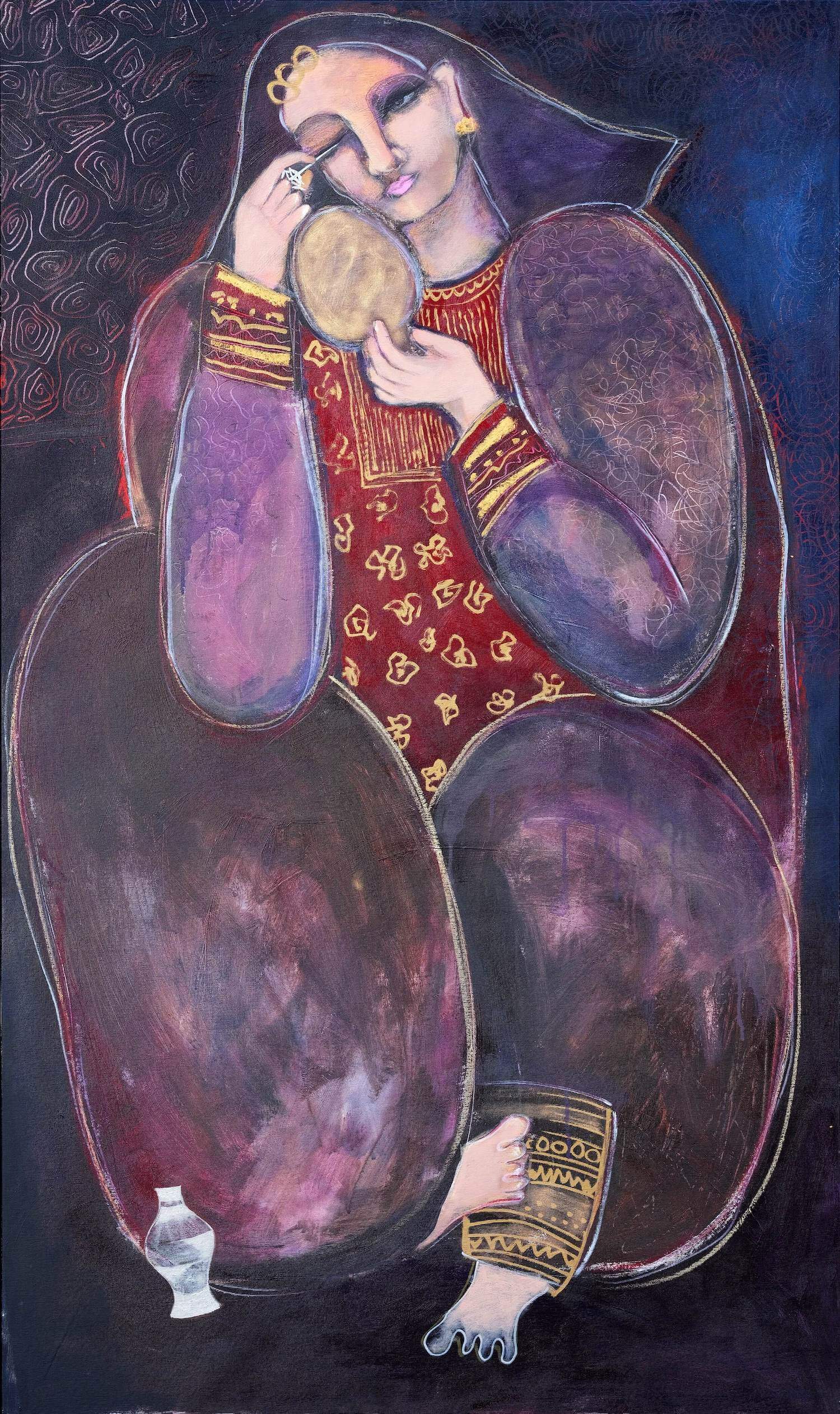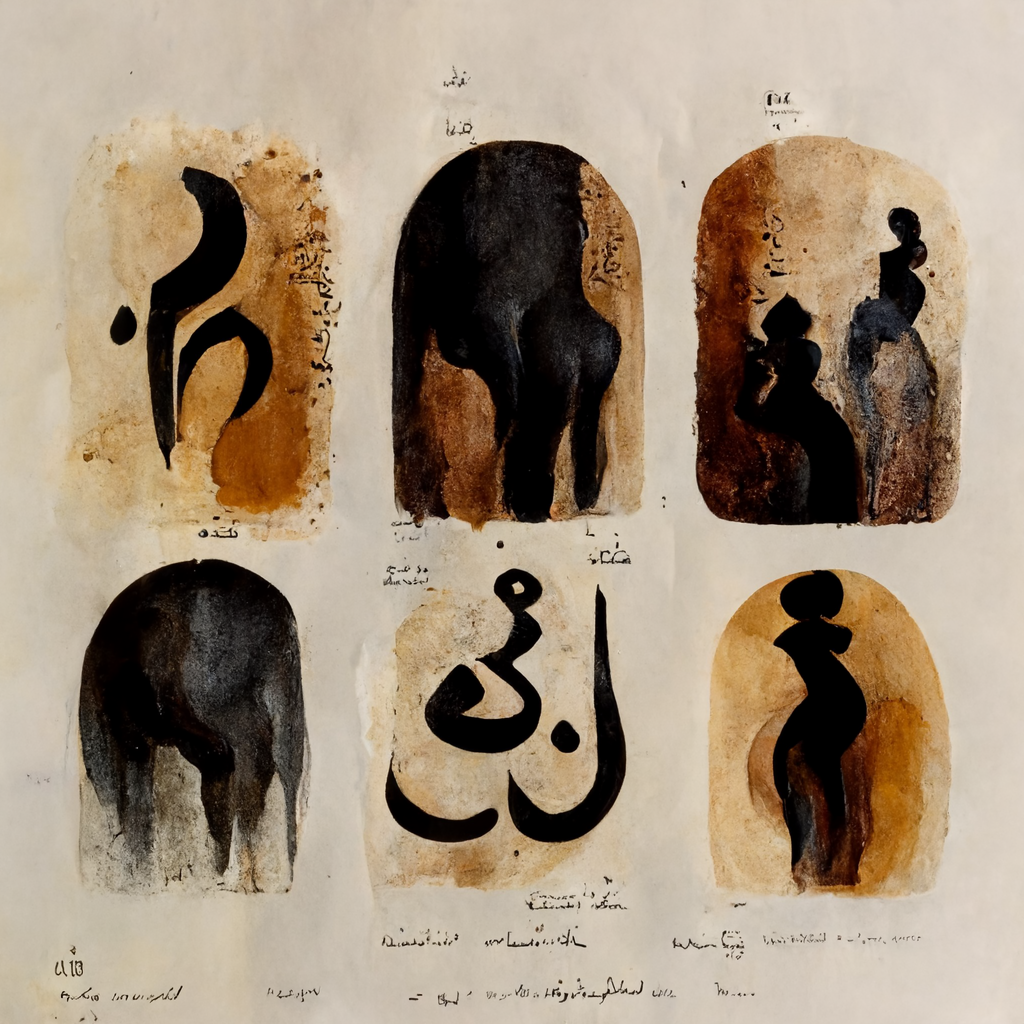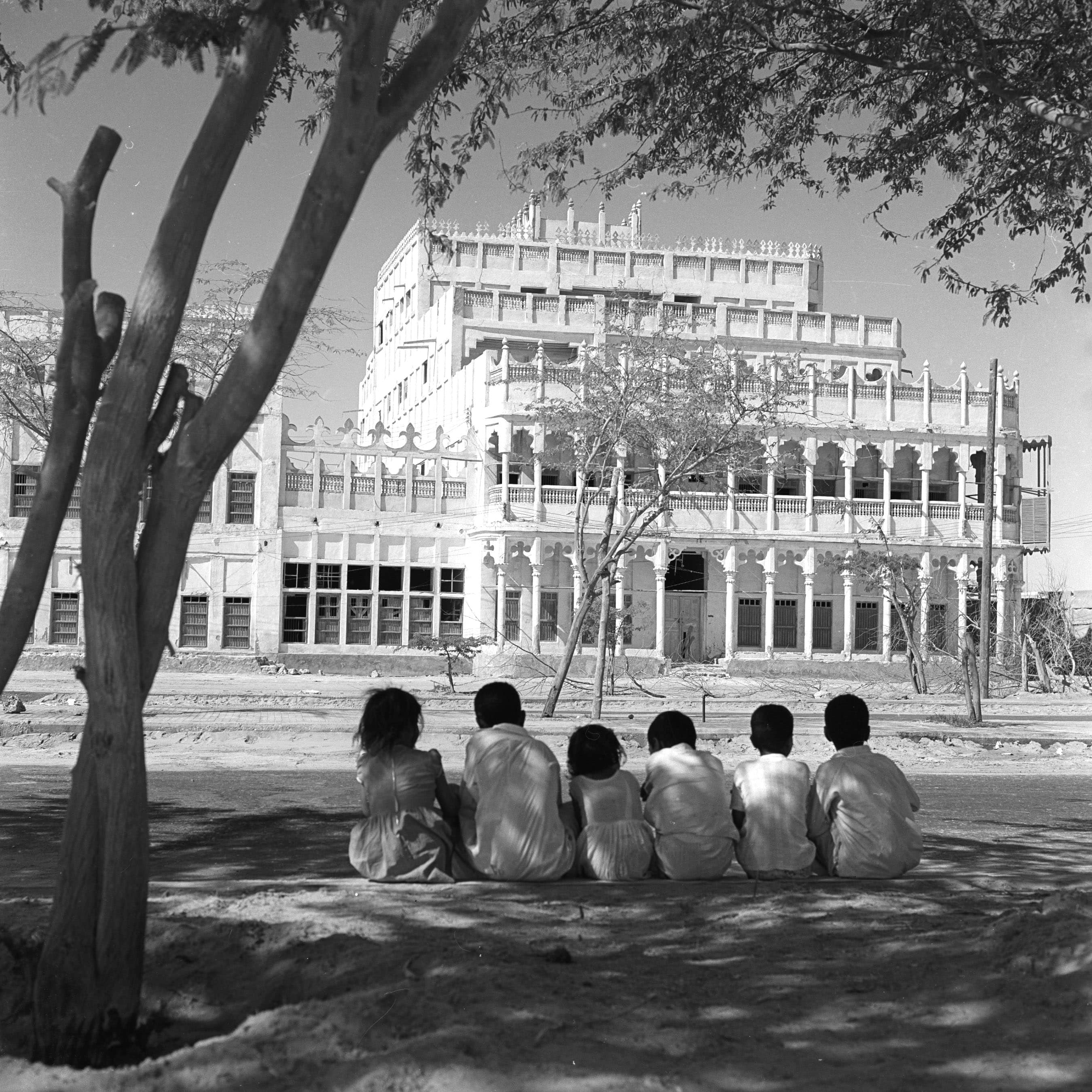Historical Identity
MU’ALLAQAT (HANGING POEMS, ANTARA 3). Abdullah Akar. Tunisia 2012. Mixed media on paper. 132cm x 132cm. Ithra Museum 2015.172. This work is inspired by the Mu’allaqat, a group of seven pre-Islamic poems that were reputed to have been suspended from the walls of the Ka’ba in Makkah. The artwork features an autobiographical poem by the poet Antara (d.615) wherein he describes how he performed feats of valor.
Migration, movement from one place to another for various reasons, be it for safety, lusher lands, change of seasons, to reconnect or disconnect, has been taking place since the beginning of time.
Identities are shaped and impacted by movement from one place to another, with many adopting new habits, languages and traditions, shedding away their old identities, while others preserve their identity wherever they may go, or at least aspects of it such as their language, their religion, their ancestral links and the stories they carry.
Some take on new identities based on where they are born, others based on when they migrated, and how. But as we know every well, not all migrations are easy and some are dangerous, as we presently hear in reports on the news about fleeing refugees from places of conflict and turbulence to safer and more stable locations.
Today we discuss a very historic and important migration, one that continues to inspire the Muslim world.
Ithra launched this year ‘The Hijrah Exhibition: In the Footsteps of the Prophet ﷺ,’ to shed light on the Prophet’s Hijrah from Makkah to Madinah. This difficult journey shaped the beginning of Islam and launched a civilization that has changed the world. The international Muslim community now comprises more than 1.9 billion people.
The Hijrah exhibition is in collaboration with the National Museum in Riyadh, the House of Islamic Art, the King Abdulaziz Complex for Waqf Libraries, and Turquoise Mountain. Numerous artifacts provided by all partners are on display. The exhibition also features collective works created by specialists and artists who ignited this journey through artworks, documentaries and books that tell the story of Hijrah.
Here are some interesting gems to discover that capture elements of our identity, from the sandals still worn today with traditional clothing, to the tents set up for special occasions, the pride of poetry and its survival through the ages, and the concept of kinship and belonging.
We thank the curators of the exhibition Dr. Idries Trevathan and Dr. Kumail Muhammed Almusaly for their amazing work and for providing us with the content below.
MU’ALLAQAT (HANGING POEMS, ANTARA 3)
Abdullah Akar
Tunisia 2012
Mixed media on paper
132cm x 132cm
Ithra Museum 2015.172
This work is inspired by the Mu’allaqat, a group of seven pre-Islamic poems that were reputed to have been suspended from the walls of the Ka’ba in Makkah. The artwork features an autobiographical poem by the poet Antara (d.615) wherein he describes how he performed feats of valor.
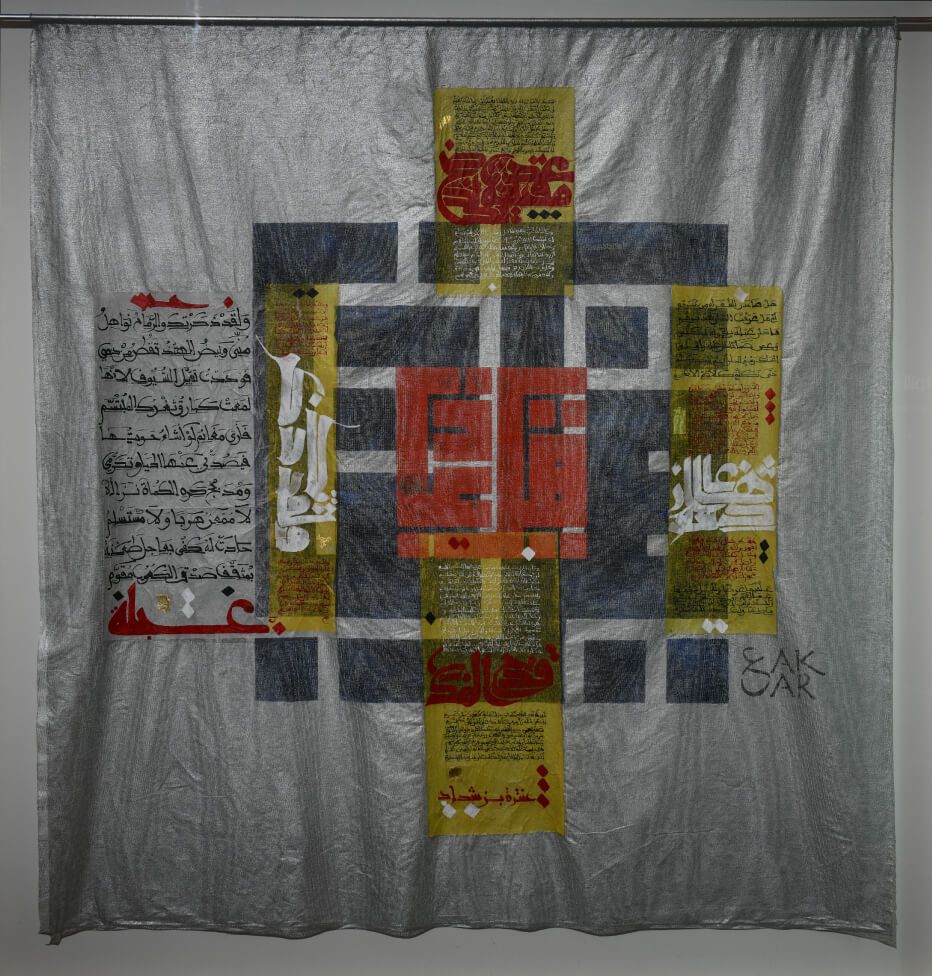
UM MA’BAD’S TENT
Emma Joyston-Bechal and Samir Ait Ahmad
Morocco, 2022
Goat and camel hair
15m × 9m × 5m
Ithra Museum
This contemporary recreation of Um Ma’bad’s tent comprises a nomadic bivouac tent which was woven using goat and camel hair on traditional looms by Berber women.
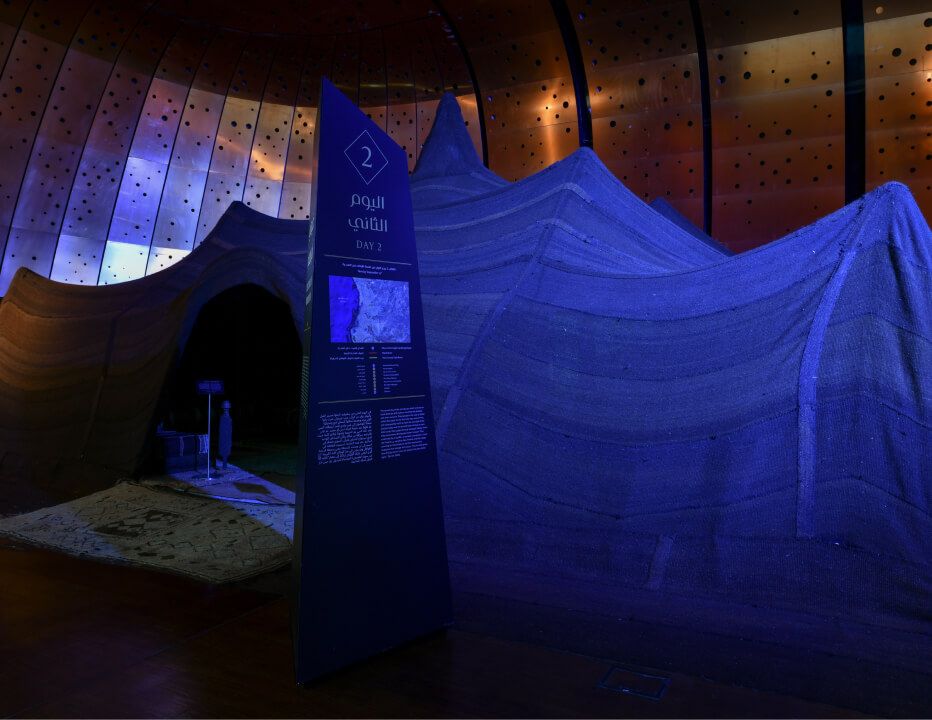
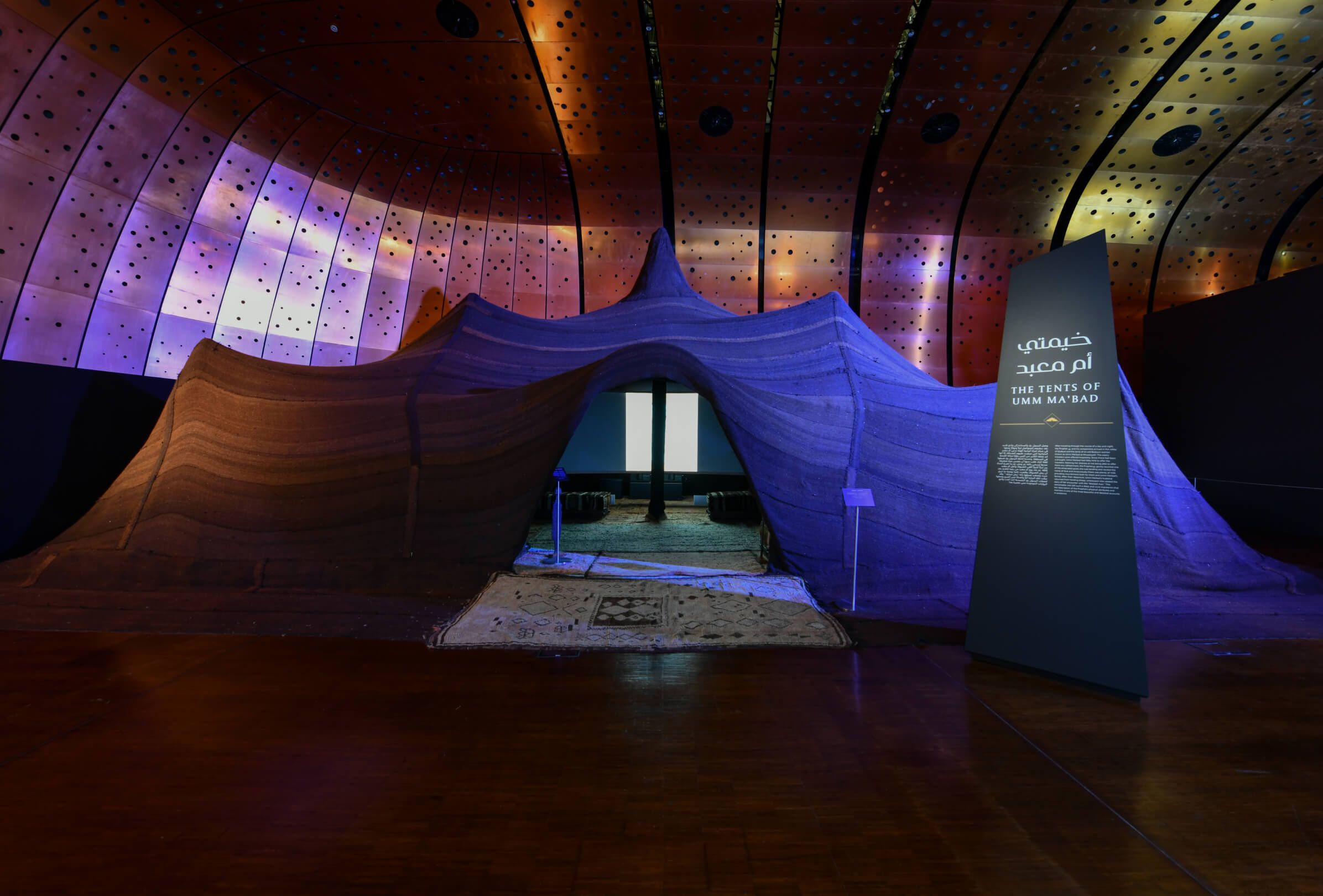
DRAWING OF THE SANDAL OF THE PROPHET
Morocco. 1901
Ink and pigments on paper
17cm x 22.5cm
Private collection E202200045
The representation of the Prophet’s sandal (Na’al Al Nabi) was originally placed in a pouch and carried by its owner as a symbol of protection. The writing around the image relates the history pertaining to the original sandals. Such depictions were inspired by the original pair of the Prophets ﷺ sandals 'Nalayn', which are purportedly kept in the Topkapi Museum in Istanbul, Turkey.
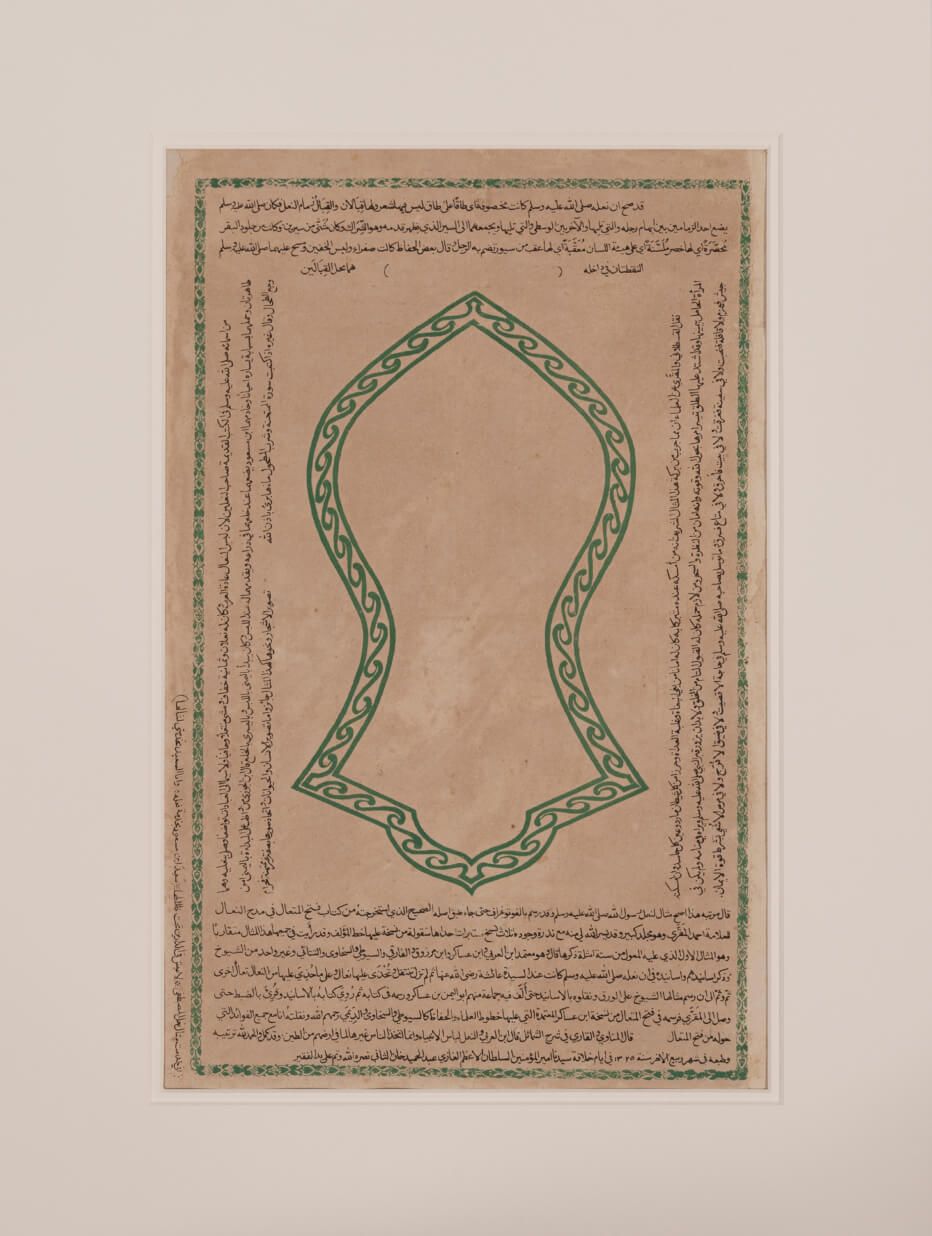
COPY OF THE PROPHET’S SANDALS
Saudi Arabia 2021
Leather
30 cm
Private collection E202200037.2
According to the Moroccan hadith scholar Ibn ‘Asakir (d. 1287), craftsmen from North Africa and Andalus made exact copies of the originals in the 13th century. These copies were known to have been given to famous Hadith scholars in major Islamic capitals around the world. The scholars were entrusted with the responsibility of transmitting and propagating the teaching of the Hadith traditions of Prophet Muhammad ﷺ.
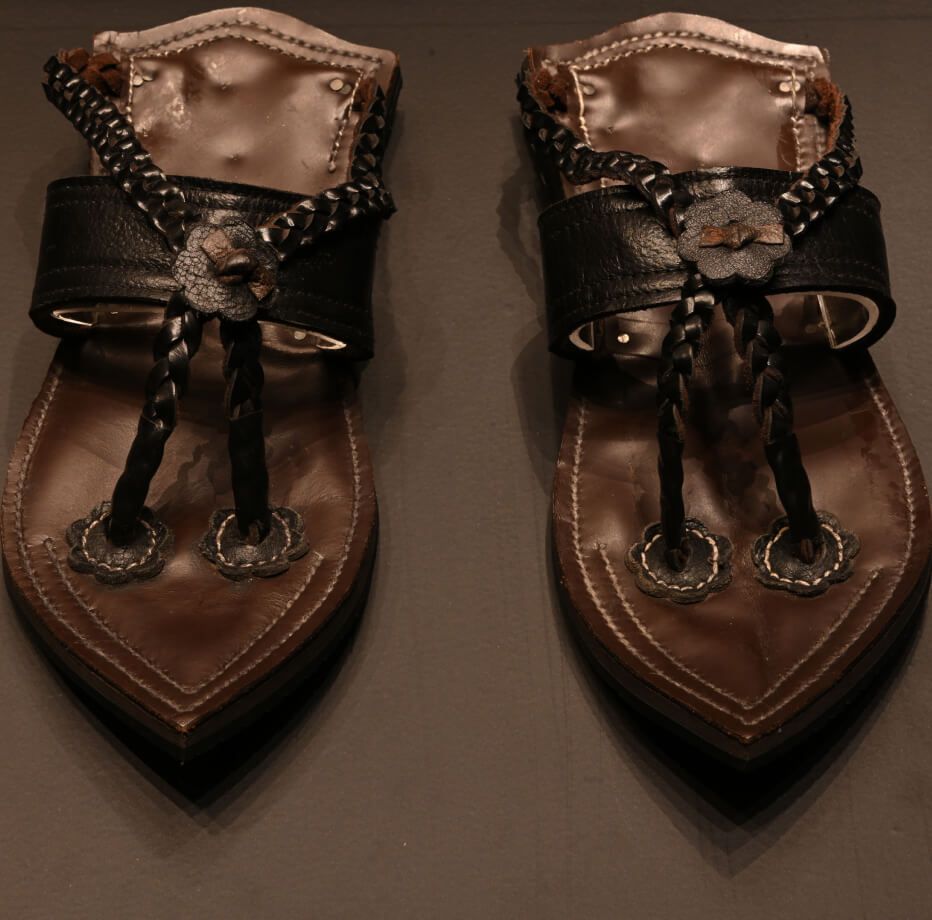
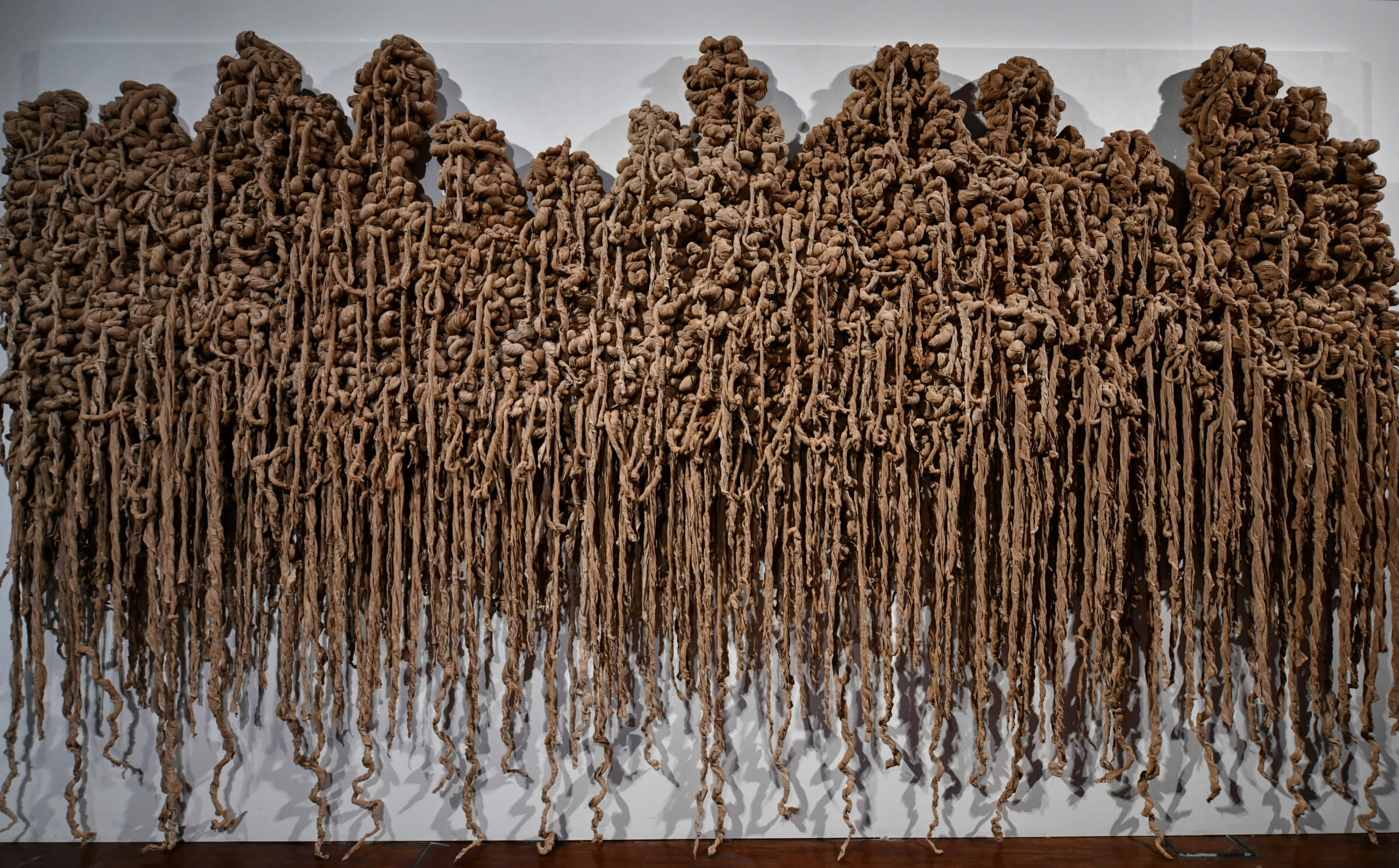
BROTHERHOOD, by Zahra Al Ghamdi, Saudi Arabia, 2022, Fabric and clay, 300m x 400cm, Ithra Museum 2022.0009.
“After researching the Hijrah story, I wanted to create an artwork which expressed the concept of ‘brotherhood’ which developed between the Muhajireen (lit: migrants, those who emigrated from Makkah with the Prophet ﷺ) and the Ansar (lit: helpers. those in Medina that took in those migrants from Makkah). I wanted the piece to both express the hardships the Muhajireen experienced in migrating and the kind and selfless act of the Ansar of welcoming the Muhajireen into their home, and supporting them by sharing everything they owned. Therefore, I sought to make a large installation that highlights this bond and the strength of their roots in creating a fruitful relationship.
Using natural materials (a nod to the natural landscape of the Hijrah), I combined the elasticity of the fabrics and the softness of the clay. I dipped the fabrics in mud and knotted them together in different sizes. These knots are meant to signify the close relationships that are rich in altruism and love between Ansar and Muhajirrun and the differently colored merging strands represent the growth and strength of roots of a great tree. Through this work, I am making an appeal to revive and bring to life this concept of brotherhood, which gives meaning to life”
- Zahra Al Ghamdi
